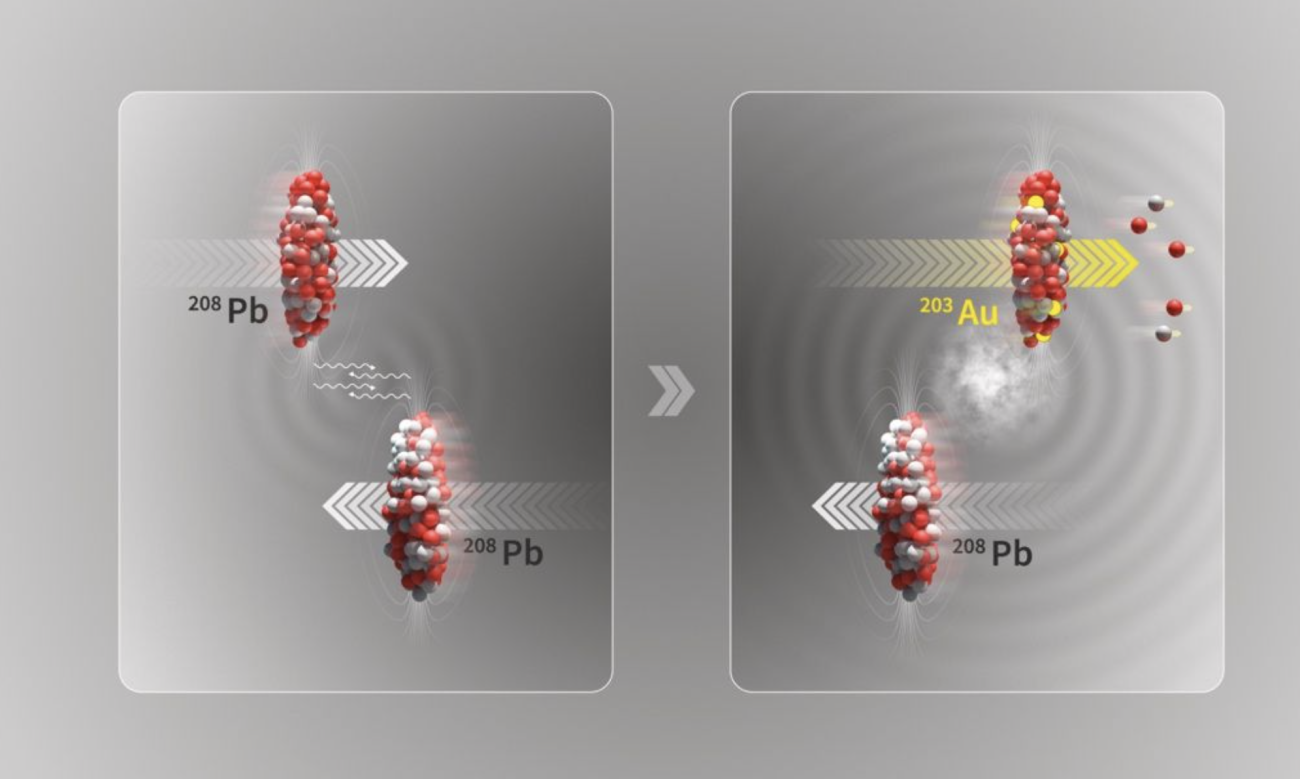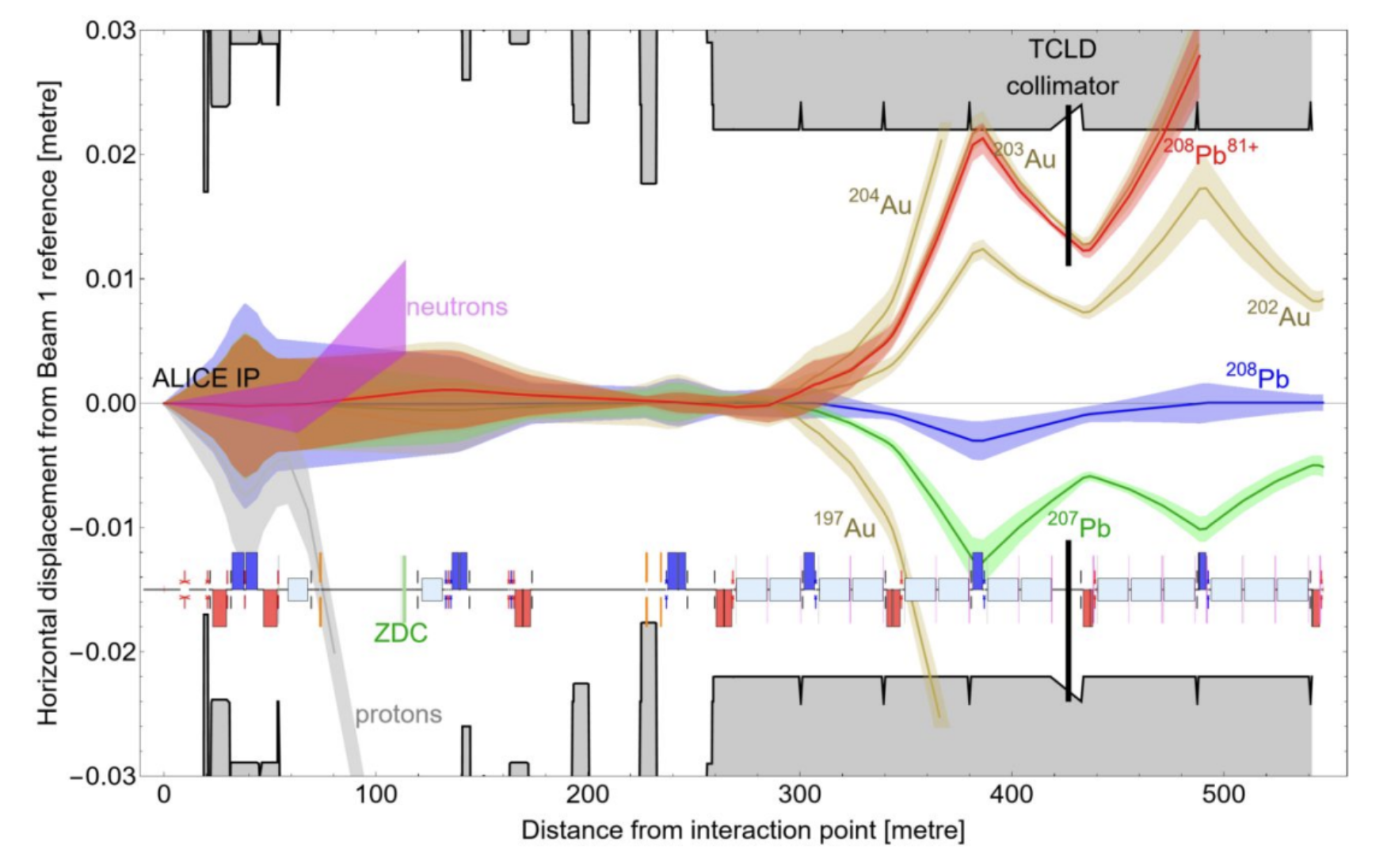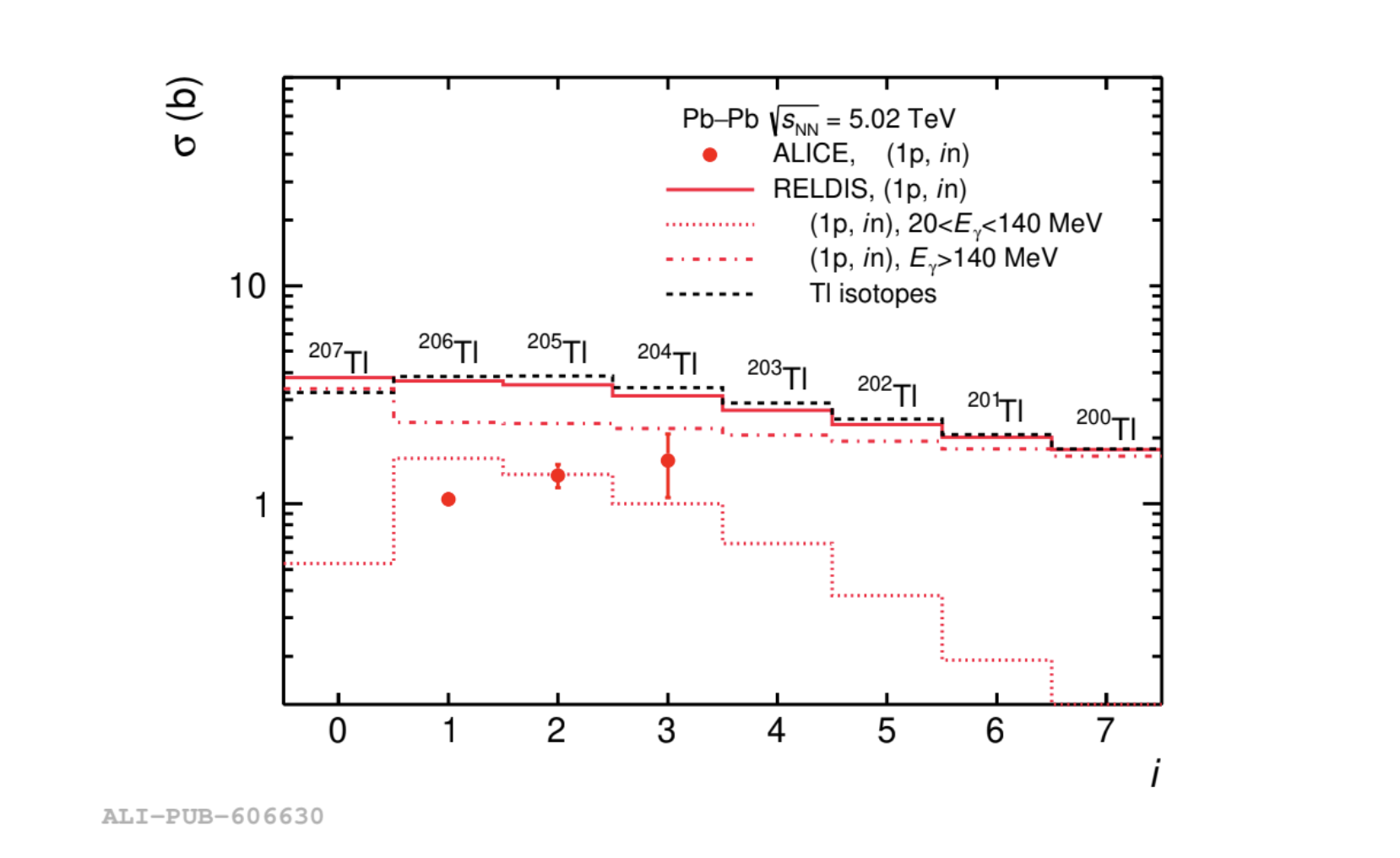Heavy isotopes production via electromagnetic interactions at the LHC

The ALICE experiment at LHC studies ultra-relativistic heavy-ion collisions to characterize the Quark-Gluon Plasma (QGP) — a state of matter where quarks and gluons are deconfined. This state existed briefly in the early Universe, just a few millionths of a microsecond after the Big Bang. However, not all the accelerated ions undergo hadronic interactions. Many interact via the strong, Lorentz-contracted, electromagnetic fields generated by charged, relativistic particles.
In these Ultra-Peripheral Collisions, each nucleus sees the incoming one as a flux of quasi-real photons and can absorb one or more of these photons, resulting in nuclear excitation and subsequent nucleon emission. The photon flux can be calculated in the framework of the Weizsäcker-Williams equivalent photon model. The intensity scales with the square of the electric charge (Z2), being therefore extremely intense at the LHC, where 20882Pb ions (Z = 82) collide.
The spectrum is dominated by low-energy photons, with energies below 50 MeV in the nuclear rest frame, leading to Giant Dipole Resonance excitation, which decays mainly through the emission of a single neutron. ALICE measured that the single neutron emission contributes around 52% of the total cross-section for electromagnetic dissociation (EMD) in Pb–Pb collisions at √sNN = 5.02 TeV.
When photons with larger energies are absorbed, the nucleus can also emit one or more protons. The residual nucleus can either be a Pb isotope (if only neutrons are emitted), or an isotope of another element: thallium if a single proton is emitted, mercury when two protons are emitted, or gold if three protons are emitted.

Figure 1: Envelopes of the trajectories of secondary isotopes produced in the EMD of Pb nuclei. It can be observed that gold nuclei hit the collimators in the region close to the ALICE experiment.
The emitted nucleons are Lorentz-boosted at forward rapidities and the ideal devices for their detection are therefore the Zero Degree Calorimeters (ZDC) — compact hadronic calorimeters placed close to beam rapidities. ALICE is so far the only LHC experiment equipped with both neutron (ZN) and proton (ZP) ZDC. ZN is located between the beam pipes at 0° relative to the beam axis, while ZP is placed externally, where positively charged particles are deflected. Both are situated 112.5 m from the interaction point on either side of ALICE.
Measurements of cross-sections for EMD processes with neutron emission have been carried out since 2010, while measurements investigating proton emission required more sophisticated simulations to properly account for beam optics and detector effects. Recently, ALICE exploited ZDC data to achieve the first measurement of proton emission accompanied by neutron emission in the electromagnetic dissociation of 208Pb at LHC energy.

Figure 2: Measured (red points) and calculated with RELDIS (red solid-line histogram) values of cross-section for the emission of a k protons accompanied by at least one neutron in EMD of 208Pb nuclei at √sNN = 5.02 TeV. The black line shows the calculated cross-sections for the production of Pb, Tl, Hg and Au nuclei.
The production of secondary nuclei at high-energy colliders significantly contributes to the beam luminosity decay, thus reducing the beam lifetime. Moreover, the machine magnetic fields are configured to guide the beam nuclei along the nominal orbit. On the other hand, nuclei with a different rigidity are deflected along different trajectories and may impact the beam pipes, collimators, or magnets, potentially leading to localised heating. Accurate models, validated by experimental data, are therefore essential to predict rates, properties, and paths of the produced secondary nuclei. ALICE measurements provide valuable inputs for such modelling, also in perspective of the design of future colliders.

Figure 3: Measured (points) and calculated (solid-line histogram) cross-section values for the emission of neutrons accompanied by a single proton in EMD of 208Pb nuclei at √sNN = 5.02 TeV. Dotted and dashed-dotted-line histograms are for RELDIS calculations for EMD induced by photons with energies 20 < Eγ < 140 MeV and Eγ > 140 MeV, respectively. Calculated cross-sections for the production of specific thallium isotopes are shown by the dashed-line histograms.
In a recent paper published in Physical Review Journals, the ALICE collaboration reported measurements that quantify the transmutation of lead into gold in CERN’s LHC. The news of the production of gold isotopes from lead ions has struck the public imagination. However, the measurement should be quantified: although the cross-section for gold production is comparable to that of hadronic interactions, the total number of gold nuclei produced during the whole Run 2 is around 2.86 billion, equivalent to 29 millionths of a microgram. Moreover, as explained above, these nuclei collide with the LHC components after a very short time.
